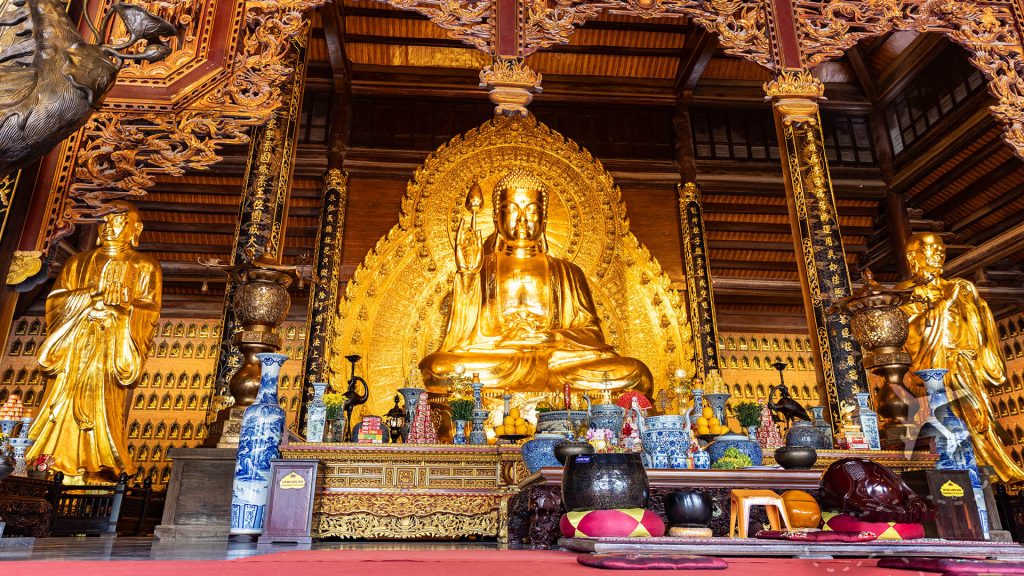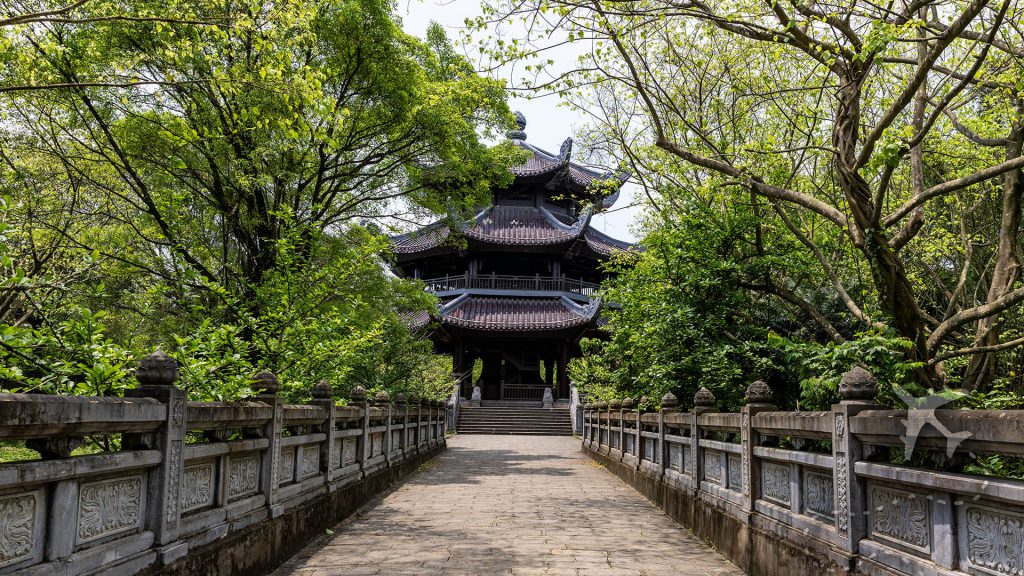- Your cart is empty
- Continue Shopping
Vietnam’s Temple Complex of Awe and Wonder

Nestled in the lush landscapes of Ninh Binh Province, Bai Dinh is more than a temple; it’s the second-largest Buddhist temple in the world and a sprawling celebration of Vietnam’s spiritual roots, architectural grandeur, and jaw-dropping scenery. While Borobudur in Indonesia holds the title of the world’s largest Buddhist temple, Bai Dinh stands out for its modern construction combined with traditional elements, offering a uniquely Vietnamese experience. As one of Southeast Asia’s top destinations for Buddhist temples, it’s a must-visit for travelers seeking cultural immersion, spiritual discovery, and sheer awe. Whether you’re drawn to the allure of ancient relics, panoramic views, or the serenity of chanting monks, Bai Dinh delivers an unforgettable experience long after your visit.
DESTINATION: Bai Dinh Temple
overcast clouds
(16 C
/ 61 F)
![]()
Unhealthy for Sensitive Groups (124)
A Brief History of Bai Dinh
The temple complex is a harmonious blend of ancient tradition and modern ambition. The original Pagoda, built in the 11th century during King Ly Thai To’s reign, lies on a quiet hillside. This historic site, with its limestone caves and natural springs, was used as a meditation retreat and a sacred space for worship.

In 2003, a massive expansion project turned Bai Dinh into what it is today: a sprawling complex spanning over 700 hectares, featuring new temples, towers, and the iconic stupa. This ambitious modernization aimed to position it as a global hub for Buddhism, attracting pilgrims and tourists worldwide while preserving its ancient roots.
Why Bai Dinh Is a Massive Draw
Architectural Splendor
Bai Dinh is jaw-dropping in scale and design. Imagine standing before a 100-ton bronze Buddha, gazing at a 36-ton bell tower, or walking along hallways adorned with 500 intricately carved Arhat statues. Every corner of the complex showcases the artistry of Vietnamese craftsmanship, blending traditional aesthetics with modern engineering.
The Spiritual Energy
Whether you’re a practicing Buddhist or just curious, Bai Dinh radiates a tranquil energy that’s impossible to ignore. Monks lead prayers, incense fills the air, and the surrounding mountains add a touch of mysticism. It’s a place where time seems to slow, offering visitors a chance to reflect and recharge.
The Scenery
Bai Dinh isn’t just a temple; it’s a gateway to some of Vietnam’s most stunning landscapes. The complex is surrounded by karst mountains, verdant rice paddies, and serene rivers, making it a photographer’s dream. Nearby, the Trang An Scenic Landscape Complex offers boat tours through caves and grottoes, perfectly complementing a visit to Bai Dinh.
Tips for Making Your Visit Memorable
- Arrive Early: Bai Dinh gets crowded, especially during weekends and festivals. Arriving early means having more time to explore without jostling through crowds.
- Wear Comfortable Shoes: The complex is vast, and you’ll do a shitload of walking. Dress comfortably and be ready for some uphill climbs.
- Explore the Old and New: Don’t skip the original 11th-century. Its ancient charm contrasts beautifully with the grandeur of the modern structures.
- Visit During Festivals: Plan your trip around Tet (Vietnamese New Year) or the Pagoda Festival. These times offer a deeper look into the local culture and rituals.
- Bring a Guide or Do Some Research: With so much history and symbolism, having context enriches the experience. Either hire a local guide or read up beforehand.
- Combine It with Trang An: After exploring Bai Dinh, hop on a boat at Trang An for a serene journey through caves and limestone peaks.
Bai Dinh Uncensored: Final Thoughts
Bai Dinh is more than a tourist destination; it’s a testament to Vietnam’s rich history, spiritual depth, and natural beauty. From its architecture’s sheer scale to its surroundings’ peaceful energy, it’s a place that feeds the soul and ignites the imagination.

So pack your curiosity and sense of adventure and go to Bai Dinh. Whether you leave with a camera full of photos, a head full of history, or a heart whole of peace, one thing’s sure: this is a destination that delivers.




